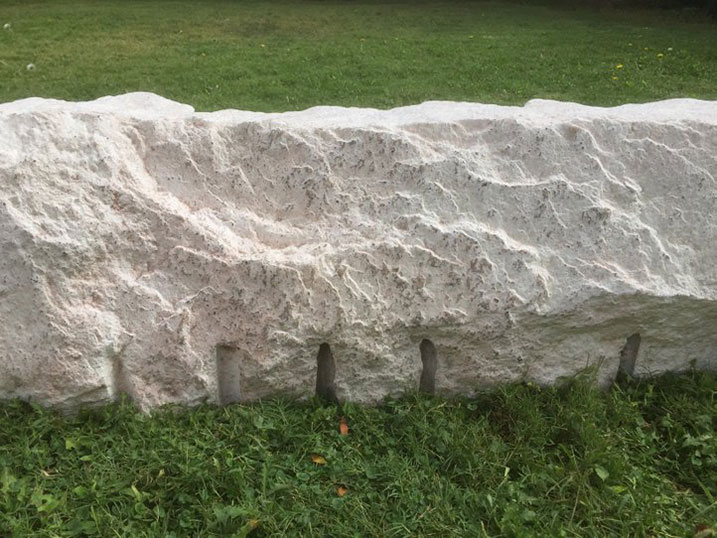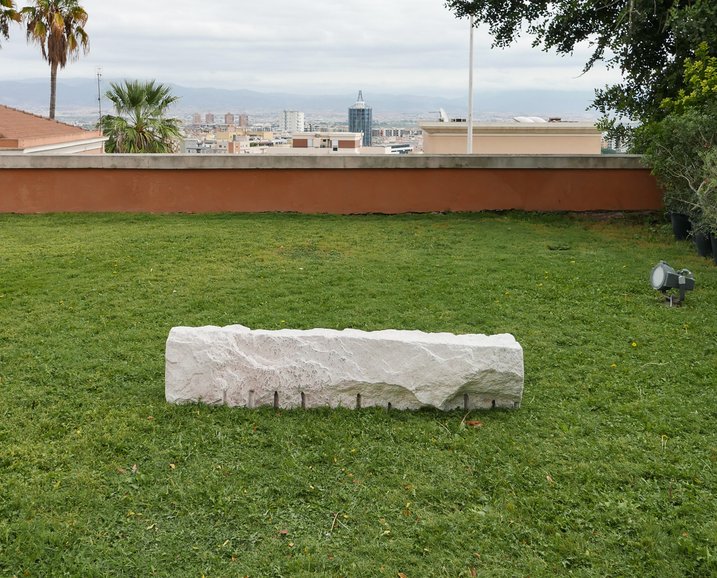In 1998, John Berger (1) wrote a wonderful letter to Subcommander Marcos (‘How to live with stones’) in which he describes Sardinia as home to a peculiar relationship between man and stone. Berger uses this theme to introduce Marcos to a Gramscian approach to patience, understood as a way of relating to historical time contrasting with the failure of violent revolutions. In Berger’s words, Gramsci’s patience “has absolutely nothing to do with indolence or complacency”.

Berger’s letter has enjoyed considerable attention in Anglo-Saxon societies: first published in the Los Angeles Times in 1998, it also appeared in his book ‘The Shape of a Pocket’ (2) and more recently in the 2013 collection ‘Gramsci: Space, Nature, Politics’ by Michael Ekers, Gillian Hart, Stefan Kipfer, and Alex Loftus. According to Berger’s poetical hypothesis, Gramsci’s attitude during his imprisonment and his notion of social progress are rooted in the way Sardinians relate to stones, a companionship which has developed throughout the centuries due to the abundance of nuraghes, domus de Janas and dry-stone walls on the island. Berger also hints at a more personal connection that Gramsci had, as a boy, to two stones he used for daily physical exercise for his back. In his attempt to persuade Marcos of the virtue of Gramscian patience, Berger loosely translates a verse by Sebastiano Satta (3):
When the rising sun, Sardinia warms your granite you have to give birth to new sun




Berger reinvents this verse, creating a new poem full of energy and hope. He repeats it twice in order to prompt Marcos to take his advice. The American philosopher Andrew Cole references Berger’s letter in his 2013 essay ‘The Call of Things: A Critique of Object-Oriented Ontologies’ (4). Cole quotes a passage from Berger’s text as a particular counterexample to the way objects are treated in certain strands of contemporary philosophy (the Speculative Turn and OOO). In Berger’s letter, stones are described as possessing a kind of energy which makes it possible for people to relate to them in a very unique way, and this relationship is presented as proper to Sardinian culture. The notion of a Gramscian relationship with stones thus runs through completely different texts and contexts, serving different approaches and purposes.The specific approach to matter and stones described by Berger and discussed by Cole is analogous to a practice typical for visitors of churches, museums, cemeteries, religious or secular monuments: sometimes they feel compelled to touch certain sculptures, to rub or feel them as if to attract good fortune, receive their positive energy or the blessing of a saint or god. Sometimes this impulse becomes a habit, a ritual, a tradition. Among the innumerable instances of such a custom are the well-known cases of the foot of St. Peter in St. Peter’s Basilica in the Vatican, a statue attributed to Arnolfo di Cambio, or the crotch of funeral statue of French writer Victor Noir in the Père-Lachaise cemetery in Paris (5).
This relationship to sculptures (or a part of them) developing over time, as visitors pass by, modifies the nature of the work of art: from an object of contemplation, it enters a physical and ritualistic relationship, partially recovering the aura or mana that used to be attributed to works of art in the past. The habit of touching statues wears, damages and transforms them. The public carries on this tradition, insensitive to its destructive consequences. The work ‘When the rising sun (…)’ is always in a state of becoming, as it develops over time and in interaction with the viewer. The physical relationship that viewers are invited to establish with the sculpture by touching it is creative and destructive at once. The Sardinian granite was donated by the Sciola Foundation. Unfortunately, Pinuccio Sciola did not live to start his sculpture. The stone was primed with gesso following the technique used to prepare canvases for painting. The surface was then polished with sandpaper. By touching the stone viewers discovers its irregularities, continue to smoothen its surface and ultimately modify its structure, shape, and history. The creative process is thus extended to the existence of the sculpture itself.
Notes:
(1) ‘How To Live With Stones. An Open Letter to Subcommandante Marcos in the Mountains of Southeast Mexico’, John Berger.
(2) ‘Pockets of resistance’, John Berger by Andy Merrifield. Reaktion Book, 2012.
(3) Original Satta poem: “Se l’aurora arderà su’ tuoi graniti Tu lo dovrai, Sardegna, ai nuovi figli. A questo: a quanti cuori Vegliano nella tua ombra, aspettando! O fratello, e tu primo alla vittoria, Da’ il grido dai vermigli Pianori: Agita il palio… O rosso cavallo, O cavallo di gloria, hutalabì!”. ‘Canti‘, Sebastiano Satta. Ilisso, 2003.
(4) ‘The calls of things: A critique on Object-oriented Ontologies’, Andrew Cole. 2013
(5) ‘La tombe de Victor Noir au cimetière du Père-Lachaise’, Marina Emelyanova-Griva.
(6) ‘Matière et mémoire. Essai sur la relation du corps à l’esprit’, Henri Bergson. 1896.